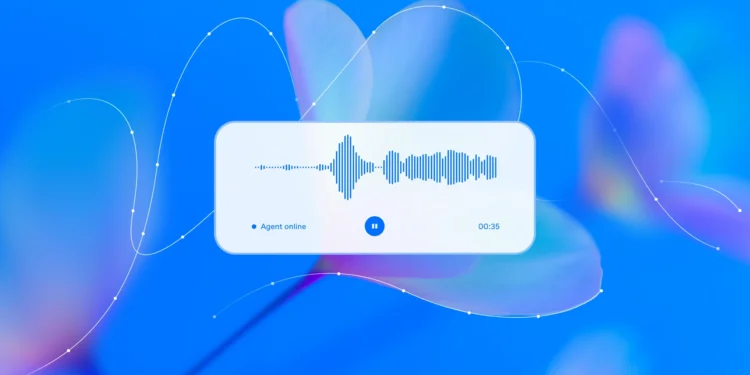AI has long lived inside text boxes. From ChatGPT to Gemini, conversations meant typing and reading, with voice only added as an afterthought. That changes with OpenAI’s new GPT-Realtime, a speech-to-speech model announced in August 2025.
Instead of clunky lag and robotic tone, GPT-Realtime responds like a person. It is fast, expressive, and nuanced. It laughs, shifts tone on command, and reacts in real time. By making AI sound natural, OpenAI is pushing voice to the centre of human–machine interaction.
What Makes GPT-Realtime Different
Traditional systems break voice into steps: speech-to-text, AI response, then text-to-speech. GPT-Realtime cuts out the middle layers. It handles audio end-to-end, which lowers latency and delivers smoother, more human-like results.
The difference is measurable. On the Big Bench Audio benchmark, GPT-Realtime scored 82.8% accuracy, up from 65.6% in earlier models. It also improved instruction following (30.5% vs 20.6% on MultiChallenge Audio) and tool use (66.5% vs 49.7% on ComplexFuncBench).
OpenAI has added new voices—Marin and Cedar—that carry natural rhythm and inflection. More importantly, the model can handle context like “speak quickly and professionally” or pick up cues such as laughter, making conversations feel less scripted and more real.
Developer Tools and Cost
GPT-Realtime is not just a research demo. It is shipping for developers. OpenAI’s Realtime API is now production-ready, with upgrades designed to make integration easier.
New features include support for SIP phone calling, image input, and remote MCP servers, giving builders more flexibility. The pricing has also dropped, with input and output audio tokens about 20 percent cheaper than before. That makes GPT-Realtime not only faster and better but also more accessible for startups.
For developers, this means a lower barrier to launching AI voice agents. Customer service bots, AI tutors, and healthcare assistants can now be built at lower cost.
Why This Matters – Voice as a Platform Shift
GPT-Realtime signals more than incremental progress. It points to a platform shift where voice becomes the default interface for AI.
The first wave of generative AI was built on text. Users typed questions and read answers. The next wave is about talking and having AI listen, respond, and act in real time.
The potential use cases stretch wide: call centres that replace wait times with instant answers, hospitals using AI assistants to triage patients, or classrooms with AI tutors that explain concepts naturally. Even consumer experiences are changing. Zillow, for example, is already testing GPT-Realtime to give house hunters conversational property tours.
If text-based chatbots made AI accessible, voice-based models could make it feel indispensable.
Canada’s Lens – Practical Use Cases
For Canada, GPT-Realtime could land hardest in industries where clear, responsive voice matters.
- Call centres: Canada’s customer support sector employs thousands. With GPT-Realtime, companies could deploy AI agents that handle basic queries instantly, leaving humans for complex cases.
- Healthcare: Clinics and telemedicine providers could use natural voice AI to guide patients, answer routine questions, or even help triage cases before a doctor steps in.
- Fintech: Canadian startups in banking and insurance could lean on voice AI for onboarding, compliance checks, or fraud alerts, all delivered in a conversational tone.
These are not distant scenarios. With the Realtime API now cheaper and production-ready, Canadian developers and enterprises can start building today.
The Takeaway
GPT-Realtime shows where AI is heading: away from screens and toward conversations. For Canadian businesses, the opportunity is immediate. Industries built on voice, including call centres, telehealth, and fintech, now have access to a tool that makes AI sound less like a bot and more like a colleague.
The shift is subtle but powerful. If text made AI useful, voice could make it natural. And with OpenAI cutting costs and shipping production-ready APIs, Canadian developers have few excuses not to start experimenting. The future of AI may not be typed. It may be spoken.










